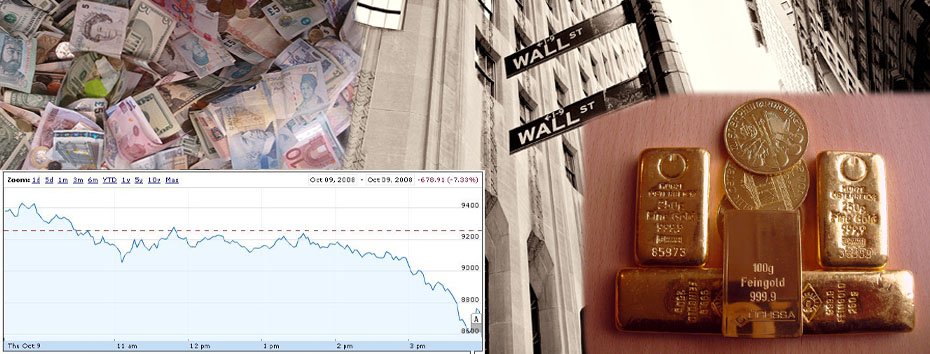If you’re like most people on the internet, you’ve come across a website or advertisement for a financial newsletter of some kind.
It might be an investment newsletter, it might be on getting out of debt, learning real estate to make more money, or how to take advantage of government programs.
There are plenty of blogs with free financial advice, but those are often general (and sometimes you get what you pay for in terms of advice quality).
If you’ve never subscribed to an investment newsletter, you’ve probably at least thought to yourself that it would be nice to have a professional tell you what to do with your money each month.
But you’ve also probably asked yourself, “Is it worth the cost of the subscription?”
How Do I Know What I’m Getting?
This part is usually straight forward. If it is a legitimate financial research firm, it should be easy to see on their website what is included. Oftentimes companies will do promotions and throw in additional guides or subscriptions. If you can’t tell what you’ll be getting as part of your subscription, don’t subscribe. Move on to your next option.
Once you know what you are getting, make sure it matches up with what you want to get. You are the one paying for the service, so if it seems like it’s only kind of what you want, you should probably keep looking. There are newsletters that focus on metals & mining, retirement, real estate, commodities… whatever you want to learn about. So don’t feel pressured to buy the first one you see. There are lots of options out there.
Additionally, many research firms will have a free version of their newsletter to give you a taste of what they offer. Try the free subscription and see if the information seems helpful. If a free subscription is mainly them trying to upsell you on one of their premium subscriptions, just cancel it. But if they give you helpful, valuable information in the free newsletter, that’s a good sign that the paid subscriptions will be more of the same, in greater detail.
How Do I Know What’s A Good Deal?
Many financial newsletters are expensive. The reason for that is either 1) it’s a scam or 2) it’s a legitimate source of financial advice. The reason #2 is expensive because the good newsletters actually have teams of researchers and analysts studying the market and companies to invest in, all working on your behalf. So the cost has to go up to pay all these people.
But the way you decide if it’s a good deal is a bit more subjective. You want to make sure that the subscription covers the information you want, and that you can afford the cost. You should also read tutorials and reviews of other people who have subscribed, to see if they are happy with the value of the subscription.
How Do I Know If It’s a Trusted Source?
This can get a little tougher. If you have a friend that has tried the subscription and they vouch for it, that’s a good sign. You can also do some research to find out how long the company has been around (the longer, the better). Also, if you heard about the newsletter from another source you trust, that recommendation can be helpful as well.
Testimonials and reviews can also be helpful here. You can search Google for “review of ____ newsletter” and you should get enough results to help you make your decision.
Any legitimate financial newsletter worth subscribing to will also offer some sort of satisfaction or money-back guarantee. You should never have to try a financial newsletter without knowing that you can get a refund if the newsletter isn’t what you expected.
Should I Even Bother Subscribing To A Financial Newsletter?
This is an important question to ask. Many newsletters make hyperbolic promises with their marketing campaigns, and get you excited that if you’ll only subscribe to them, you’ll be rich in no time. When you see these sorts of promises, take a minute to pause.
Remind yourself that there are no magic overnight riches. If you are subscribing to a financial newsletter, it’s because you want to A) learn more about the markets, B) protect and slowly grow your nest egg, or C) learn more about conventional and unconventional investment vehicles.
If you are trying to get rich quickly, you probably shouldn’t be subscribing to a financial newsletter. You’ll be disappointed because you just want to win the lottery.
If you don’t have money to invest, you probably shouldn’t subscribe. You’ll just be sad that you can’t take advantage of the strategies offered in the newsletter. You’d be better off subscribing to an entrepreneurial or business newsletter at this point.
If you have some money to invest, and you have the time to actually read the reports and analysis, and you have the gumption to actually follow through with what you are learning, then a financial newsletter will be helpful for you.
Where Should I Start?
There are countless options out there, and depending on what your goals are, you may like certain newsletters that others don’t care for. But if you are completely new to this realm, here are a few suggestions for you to start looking into. Remember, do your own evaluation of each source using the criteria listed above to help you determine what’s right for you.
Casey Research. Casey Research offers a number of specialized research subscriptions, and has a number of great free newsletters as well. Casey offers well-researched, professional investing advice.
The Elevation Group. EVG is more of a membership site than a newsletter, but still offers financial research. EVG goes in depth exploring various financial strategies of the rich, and tells you how you can use the same strategies.
Stansberry Research. Porter Stansberry offers a variety of newsletters to choose from, ranging from free to $99 to $5000 for their high end subscriptions. This is more of the traditional stock/trader type of research.
Hopefully that’s enough to get you started on your research. Good luck!






Recent Comments